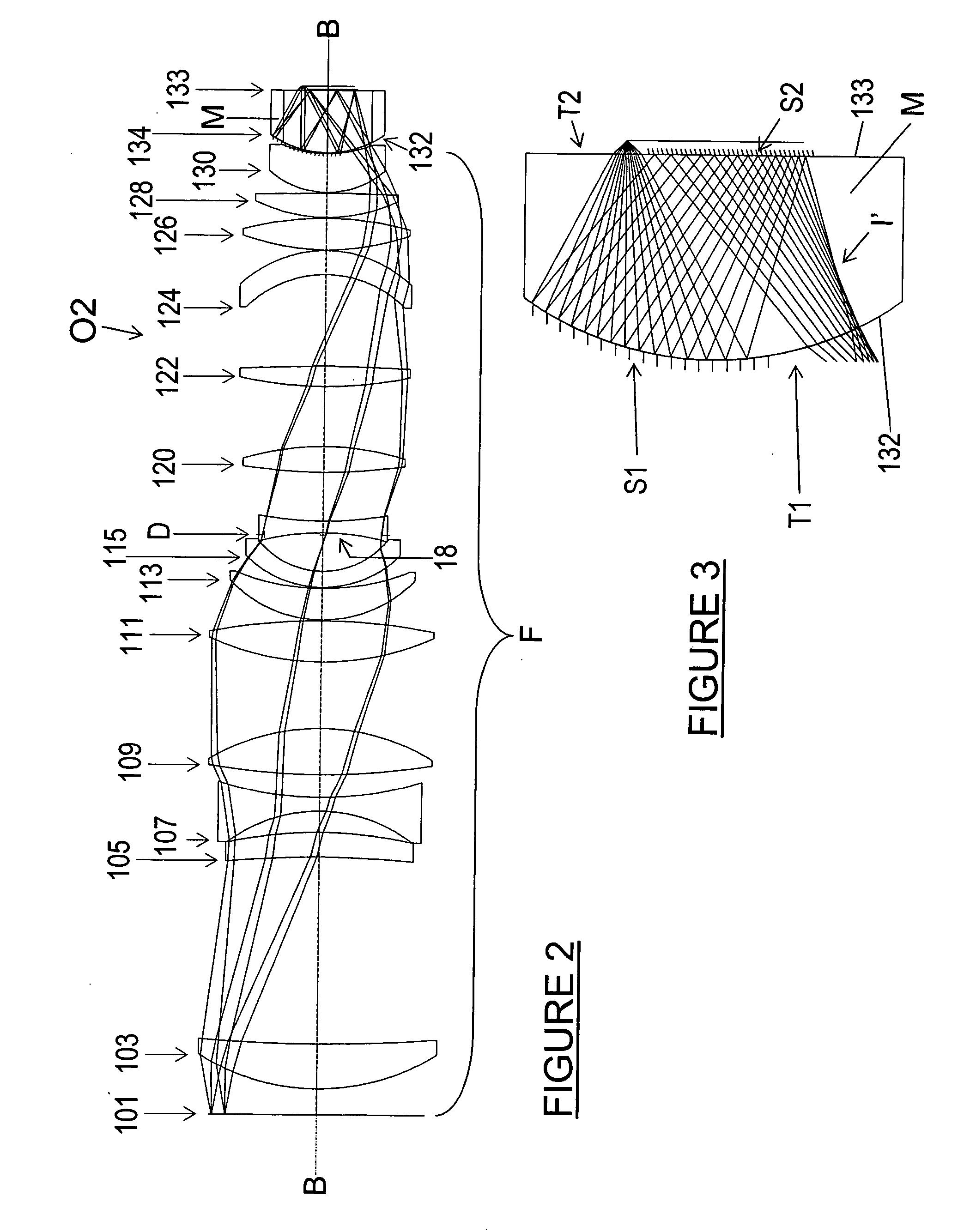Catadioptric projection objective with an in-line, single-axis configuration
a technology of in-line, single-axis configuration and catadioptric projection, which is applied in the field of catadioptric projection objective for microlithographic exposure apparatus, can solve the problems of limited selection of materials for lenses in microlithographic objectives, limited design flexibility, and inability to meet the requirements of chromatic aberration correction
- Summary
- Abstract
- Description
- Claims
- Application Information
AI Technical Summary
Benefits of technology
Problems solved by technology
Method used
Image
Examples
Embodiment Construction
[0064] In the catadioptric objectives described below and illustrated in the drawings, the object plane and the image plane of the objective are represented, respectively, by the planes of the reticle pattern and the wafer surface. However, the invention could also be embodied in an objective that is integrated in a larger objective system in which the object plane and / or the image plane of the inventive objective represent intermediate image planes of the larger overall objective system.
[0065]FIG. 1 illustrates a catadioptric projection objective O1 according to the invention. All elements of the objective, i.e., the lenses of the first optical subsystem F1, the concave mirror S, the lens L with the beam splitter coating, and the third optical subsystem F2 are aligned and centered on the optical axis represented by the line A-A in FIG. 1. A micro-structured mask R (also referred to as a reticle R) is arranged in the object plane, and a wafer W with a light-sensitive coating is arr...
PUM
 Login to View More
Login to View More Abstract
Description
Claims
Application Information
 Login to View More
Login to View More - R&D
- Intellectual Property
- Life Sciences
- Materials
- Tech Scout
- Unparalleled Data Quality
- Higher Quality Content
- 60% Fewer Hallucinations
Browse by: Latest US Patents, China's latest patents, Technical Efficacy Thesaurus, Application Domain, Technology Topic, Popular Technical Reports.
© 2025 PatSnap. All rights reserved.Legal|Privacy policy|Modern Slavery Act Transparency Statement|Sitemap|About US| Contact US: help@patsnap.com



